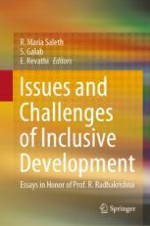2020 | OriginalPaper | Chapter
12. Inclusive Poverty Index Without a Poverty Line in the Tradition of Engel
Authors : T. Krishna Kumar, Amit Kumar Chattopadhyay, Sushanta Kumar Mallick
Published in: Issues and Challenges of Inclusive Development
Publisher: Springer Singapore
Activate our intelligent search to find suitable subject content or patents.
Select sections of text to find matching patents with Artificial Intelligence. powered by
Select sections of text to find additional relevant content using AI-assisted search. powered by
